Category: Recommended Reading
“China Root: Taoism, Ch’an, and Original Zen” by David Hinton
Leanne Ogasawara in the Asian Review of Books:
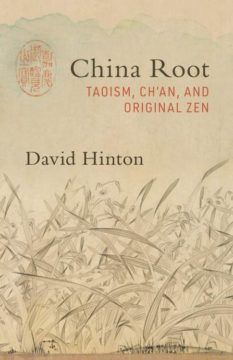 Buddhism would undergo profound changes as it was transmitted from its origins in India east into China, in the first century CE. Terminology had to be assimilated, for one thing. And when one language is translated and assimilated into another, it is inevitable that some conceptual connections will be lost and the meaning of ideas altered. Take Zen Buddhism. In his latest book, David Hinton says that we in the West are not just once-removed from the original Zen—but twice removed. This is because the Zen we know from Japan had already lost much of the original Daoist underpinnings of Chinese Zen—known as Chan—even before the religion traveled across the Pacific to America.
Buddhism would undergo profound changes as it was transmitted from its origins in India east into China, in the first century CE. Terminology had to be assimilated, for one thing. And when one language is translated and assimilated into another, it is inevitable that some conceptual connections will be lost and the meaning of ideas altered. Take Zen Buddhism. In his latest book, David Hinton says that we in the West are not just once-removed from the original Zen—but twice removed. This is because the Zen we know from Japan had already lost much of the original Daoist underpinnings of Chinese Zen—known as Chan—even before the religion traveled across the Pacific to America.
As it is generally understood, as early thinkers in China grappled with the new philosophy from India and struggled to work out issues of localization, it was only natural that things would be reinterpreted through the lens of the native belief system—in this case, Daoism. While Hinton is not the first thinker to posit a strong influence of Daoism on Zen, he argues that in addition to the issues of translation, there were elements of the new religion from India that resonated strongly with the native Daoist belief system. It was, in other words, a match made in heaven.
More here.
Wednesday, December 23, 2020
A Scholarly Adventure for Gen Z
Iman Sultan in the Los Angeles Review of Books:
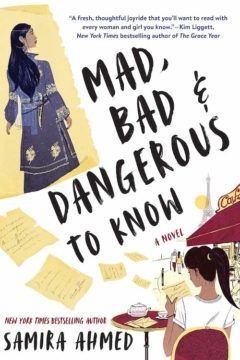 SAMIRA AHMED’S young adult novel Mad, Bad & Dangerous to Know evokes the mysterious woman at the center of Lord Byron’s 1813 poem The Giaour. Leila is the favored concubine in the court of a Turkish pasha who falls in love with the Giaour (or “infidel”), a non-Muslim man she visits in a rose garden at night. As Leila plots her doomed escape, Ahmed gives Byron’s Orientalized woman a narrative, an identity, and a voice.
SAMIRA AHMED’S young adult novel Mad, Bad & Dangerous to Know evokes the mysterious woman at the center of Lord Byron’s 1813 poem The Giaour. Leila is the favored concubine in the court of a Turkish pasha who falls in love with the Giaour (or “infidel”), a non-Muslim man she visits in a rose garden at night. As Leila plots her doomed escape, Ahmed gives Byron’s Orientalized woman a narrative, an identity, and a voice.
Flash forward to the 21st century. Khayyam, spending a summer in Paris before her senior year in high school, is nursing a grievance after her submission to an art history contest is exposed as an unintended sham. As she puts it, “a single sentence in a twenty-yearold article about Delacroix I found online” led her “down a rabbit hole. Apparently fake news is also old news.” An American-born girl with an Indian Muslim mother and a French father, Khayyam struggles with her mixed heritage and identity as a South Asian woman of color, attempting to reclaim her own voice so that she isn’t “a blank page that everyone else gets to write on.” On a Paris street, she runs into Alexandre, a good-looking French college student, who is also a descendant of Alexandre Dumas, the mixed-race author of The Count of Monte Cristo. When Khayyam visits her new acquaintance’s apartment, she realizes that there is more to her failed art-world discovery than she initially realized. She just needs to do more digging.
More here.
Early humans may have survived the harsh winters by hibernating
Robin McKie in The Guardian:
 Bears do it. Bats do it. Even European hedgehogs do it. And now it turns out that early human beings may also have been at it. They hibernated, according to fossil experts.
Bears do it. Bats do it. Even European hedgehogs do it. And now it turns out that early human beings may also have been at it. They hibernated, according to fossil experts.
Evidence from bones found at one of the world’s most important fossil sites suggests that our hominid predecessors may have dealt with extreme cold hundreds of thousands of years ago by sleeping through the winter.
The scientists argue that lesions and other signs of damage in fossilised bones of early humans are the same as those left in the bones of other animals that hibernate. These suggest that our predecessors coped with the ferocious winters at that time by slowing down their metabolisms and sleeping for months.
The conclusions are based on excavations in a cave called Sima de los Huesos – the pit of bones – at Atapuerca, near Burgos in northern Spain.
More here.
The Question of Affirmative Action: Michael Sandel Interviews Glenn Loury
Michael Sandel and Glenn Loury in Quillette:
MICHAEL SANDEL: I wonder if I could begin with a provocative quotation from a lecture you’ve given. You’ve said that affirmative action is not about equality, it’s about “covering ass.” What did you mean by that and what do you think generally about the ethics of affirmative action?
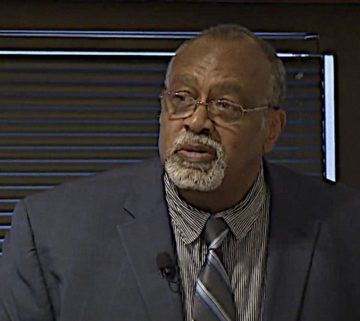 GLENN LOURY: I was drawing the listener’s attention to the difference between the institutional interest in having a diverse profile of participants and the interests, as I understand them, of the population which may be the beneficiary of this largesse. My point was: if you want genuine equality, this is distinct from titular equality. If you want substantive equality, this is distinct from optics equality. If you want equality of respect, of honor, of standing, of dignity, of achievement, of mastery, then you may want to think carefully about implementing systems of selection that prefer a population on a racial basis. Such a system may be inconsistent over the longer term in achieving what I call genuine equality; real equality; substantive equality; equality of standing, dignity, achievement, honor, and respect.
GLENN LOURY: I was drawing the listener’s attention to the difference between the institutional interest in having a diverse profile of participants and the interests, as I understand them, of the population which may be the beneficiary of this largesse. My point was: if you want genuine equality, this is distinct from titular equality. If you want substantive equality, this is distinct from optics equality. If you want equality of respect, of honor, of standing, of dignity, of achievement, of mastery, then you may want to think carefully about implementing systems of selection that prefer a population on a racial basis. Such a system may be inconsistent over the longer term in achieving what I call genuine equality; real equality; substantive equality; equality of standing, dignity, achievement, honor, and respect.
I set this within a historical context in which African Americans—beginning from exclusion, slavery, Jim Crow segregation, widespread discrimination—are actually diminished in terms of the development of our competitive and productive capacities.
More here.
Vijay Prashad: The Democratic Party and the War Machine
Transcript here.
Velázquez’s Las Meninas: A Detail That Decodes A Masterpiece
Kelly Grovier at BBC Culture:
 To appreciate fully how the seemingly incidental presence of a ceramic folk craft from Latin America – when polished into pertinence by Velázquez’s virtuoso brush- becomes a visionary lens through which we glimpse the world anew, we must first remind ourselves of the cultural context from which the painting emerged and what it purports to portray. On one significant level, the work provides a self-portrait of the 57-year-old artist four years before his death in 1600, after he had spent more than three decades as court painter to King Philip IV of Spain. Palette in hand on the left side of the painting, Velázquez’s life-size selfie stares our way as if we were the very subject that he is busy capturing on an enormous canvas that rises in front of him – a painting-within-a-painting whose imaginary surface we cannot see.
To appreciate fully how the seemingly incidental presence of a ceramic folk craft from Latin America – when polished into pertinence by Velázquez’s virtuoso brush- becomes a visionary lens through which we glimpse the world anew, we must first remind ourselves of the cultural context from which the painting emerged and what it purports to portray. On one significant level, the work provides a self-portrait of the 57-year-old artist four years before his death in 1600, after he had spent more than three decades as court painter to King Philip IV of Spain. Palette in hand on the left side of the painting, Velázquez’s life-size selfie stares our way as if we were the very subject that he is busy capturing on an enormous canvas that rises in front of him – a painting-within-a-painting whose imaginary surface we cannot see.
more here.
Disclaimer
Jackson Arn at 3AM Magazine:
 Recently, I won’t say exactly when but embarrassingly late in life, I realized that books had been lying to me. Movies were slightly better, but still untruthful. To put it another way, I realized that nothing is connected. Nothing is central. Not all things happen at the same time, or a millisecond before or after that time, or at midnight, or on anniversaries.
Recently, I won’t say exactly when but embarrassingly late in life, I realized that books had been lying to me. Movies were slightly better, but still untruthful. To put it another way, I realized that nothing is connected. Nothing is central. Not all things happen at the same time, or a millisecond before or after that time, or at midnight, or on anniversaries.
Nobody jogs down a street and sees a sign that says SIMPSON and then later that afternoon drives to their dentist and finds a new receptionist, surname Simpson, caressing the desk with nails of plastic coral.
Her eyes are never the precise whimpery blue of an April morning in the Southwest. They may bear a passing resemblance to that shade, they may be very, very close, but they are never the same, no matter how hard one overworks one’s eyes.
more here.
The Moment of Impressionism
Michael Fried at nonsite:
 Specifically, I want to suggest that the advent of Impressionism around 1870 marks a fundamental break in what I will call the dialectical continuity of French painting going back to the middle of the eighteenth century, when a new conception of the absorptive and dramatic tableau came to the fore in the paintings of Jean-Baptiste Greuze (themselves inconceivable apart from the precedent of the genre paintings of Jean-Baptiste-Siméon Chardin) and the art critical and theoretical writings of the polymath philosophe Denis Diderot, the founder of art criticism as we know it. This is the fateful development analyzed in my 1980 book, Absorption and Theatricality: Painting and Beholder in the Age of Diderot, in which I argue (I would like to think I demonstrate) that starting in the mid-1750s and 1760s in France the art of painting found it necessary to confront a new imperative: to find the means to suspend or neutralize—to somehow wall off—the now suddenly distracting presence of the beholder; or to put this slightly differently, to somehow establish the supreme fiction or ontological illusion that the beholder does not exist, that there is no one standing before the painting. I describe this imperative in terms of a need to stave off, if possible to overcome, a newly distinct danger of theatricality. And I argue that this was to be accomplished with the aide of two principal strategies: first, the thematization of absorption, which is to say the depiction of personages each of whom was felt to be entirely caught up (absorbed) in whatever was understood to be taking place within the representation; and second, the promotion of a new, more exigent ideal of dramatic unity, according to which all the elements in the painting were directed toward a single dramatic end, thereby achieving a compositional effect of closure vis-à-vis the beholder.
Specifically, I want to suggest that the advent of Impressionism around 1870 marks a fundamental break in what I will call the dialectical continuity of French painting going back to the middle of the eighteenth century, when a new conception of the absorptive and dramatic tableau came to the fore in the paintings of Jean-Baptiste Greuze (themselves inconceivable apart from the precedent of the genre paintings of Jean-Baptiste-Siméon Chardin) and the art critical and theoretical writings of the polymath philosophe Denis Diderot, the founder of art criticism as we know it. This is the fateful development analyzed in my 1980 book, Absorption and Theatricality: Painting and Beholder in the Age of Diderot, in which I argue (I would like to think I demonstrate) that starting in the mid-1750s and 1760s in France the art of painting found it necessary to confront a new imperative: to find the means to suspend or neutralize—to somehow wall off—the now suddenly distracting presence of the beholder; or to put this slightly differently, to somehow establish the supreme fiction or ontological illusion that the beholder does not exist, that there is no one standing before the painting. I describe this imperative in terms of a need to stave off, if possible to overcome, a newly distinct danger of theatricality. And I argue that this was to be accomplished with the aide of two principal strategies: first, the thematization of absorption, which is to say the depiction of personages each of whom was felt to be entirely caught up (absorbed) in whatever was understood to be taking place within the representation; and second, the promotion of a new, more exigent ideal of dramatic unity, according to which all the elements in the painting were directed toward a single dramatic end, thereby achieving a compositional effect of closure vis-à-vis the beholder.
more here.
Wednesday Poem
1. Primevère Primrose
first yellow yes
but the very first
rose of the first
spring firsting
(a honeyed fist)
2. Platane Plane Tree
bark peels off in patches
leaving a mottled trunk
(inside spring pushes
out new skins) or
thickens and cracks
3. Asperge Asparagus
sparrow grass marks you
greenscented
leaving its tang in your water
all this hurry into life
(a lily stem)
4. Tulip Tulipe
still life never
motionless but fragile
in wind a turban
unwound (how
far a flower)
5. Poule Hen
women are fragile
on dating apps
and difficult to monetise
(he said) their golden
eggs in a basket Read more »
Calling Trump to Account with Sticks and Stones, and Words As Well
Andrew Levine in CounterPunch:
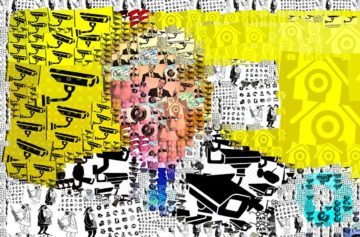 The Trump years have transformed the Greater Evil Party, formerly known as the GOP, into a party too appalling even to contemplate without going berserk. Alarmists expected all sorts of bad things to come from the Trump presidency, but no one quite expected this. Meanwhile, the Democratic Party has sprouted a left wing too extensive and organized for that wretched party’s leaders and donors to marginalize. Even after the Occupy movements of 2011 and the Sanders campaign in 2016, this too was unexpected. It is also, by far, the best thing that has happened in American politics in decades. It probably would not have happened but for Trump. Who would have expected that? Who could have imagined that his unmitigated vileness and his incompetence would have had that unintended effect? It did, though. And so, calls for social policies comparable to those achieved in advanced social democracies a half century ago have become almost mainstream. More amazing still, thanks to Trump more than anyone else, the word “socialism” need no longer be uttered only in whispers in Democratic Party circles.
The Trump years have transformed the Greater Evil Party, formerly known as the GOP, into a party too appalling even to contemplate without going berserk. Alarmists expected all sorts of bad things to come from the Trump presidency, but no one quite expected this. Meanwhile, the Democratic Party has sprouted a left wing too extensive and organized for that wretched party’s leaders and donors to marginalize. Even after the Occupy movements of 2011 and the Sanders campaign in 2016, this too was unexpected. It is also, by far, the best thing that has happened in American politics in decades. It probably would not have happened but for Trump. Who would have expected that? Who could have imagined that his unmitigated vileness and his incompetence would have had that unintended effect? It did, though. And so, calls for social policies comparable to those achieved in advanced social democracies a half century ago have become almost mainstream. More amazing still, thanks to Trump more than anyone else, the word “socialism” need no longer be uttered only in whispers in Democratic Party circles.
To be sure, the “democratic socialism” championed by Bernie Sanders, and now by a dozen or so “squad” and squad-like House members, and also, implicitly, by a handful of Senators as well, is linked to progressive strains of mid- and late-twentieth century social democratic politics more in spirit than genealogy. It is essentially an up-dated version of New Deal-Great Society liberalism. Calling it “socialism” can therefore be misleading and even counter-productive in a political culture in which capitalists and capitalist ideologues have expended a great deal of effort and treasure over the past century and a half with a view to assuring that the very word would bear negative connotations.
More here.
Play is so important that nature invented it long before it invented us
Andreas Wagner in Nautilus:
 Mind-wandering is often considered a harmless quirk, as in the cliché of the scatter-brained professor. But it has real consequences. Let’s begin with the bad ones. Absentminded people perform less well on tests that require focused attention, such as reading comprehension tests. More worrisome, they also perform more poorly on tests that you better not flunk if you have any career aspirations. Among them is the Scholastic Aptitude Test that many colleges require for admission. But mind-wandering also has an upside—at least for well-trained minds. Indeed, many anecdotes of creators like Einstein, Newton, and eminent mathematician Henri Poincaré, report that these scientists solved important problems while not actually working on anything. The common wisdom that the best ideas arrive in the shower is exemplified by Archimedes’s discovery of how to measure an object’s volume. (OK, he was in a bathtub.) But while Archimedes’s discovery was triggered by the rising water as he entered the tub, other breakthroughs surface apropos of nothing. Take this well-known quote from the Poincaré describing a period in his life when he had worked without success on a mathematical problem:
Mind-wandering is often considered a harmless quirk, as in the cliché of the scatter-brained professor. But it has real consequences. Let’s begin with the bad ones. Absentminded people perform less well on tests that require focused attention, such as reading comprehension tests. More worrisome, they also perform more poorly on tests that you better not flunk if you have any career aspirations. Among them is the Scholastic Aptitude Test that many colleges require for admission. But mind-wandering also has an upside—at least for well-trained minds. Indeed, many anecdotes of creators like Einstein, Newton, and eminent mathematician Henri Poincaré, report that these scientists solved important problems while not actually working on anything. The common wisdom that the best ideas arrive in the shower is exemplified by Archimedes’s discovery of how to measure an object’s volume. (OK, he was in a bathtub.) But while Archimedes’s discovery was triggered by the rising water as he entered the tub, other breakthroughs surface apropos of nothing. Take this well-known quote from the Poincaré describing a period in his life when he had worked without success on a mathematical problem:
Disgusted with my failure, I went to spend a few days at the seaside, and thought of something else. One morning, walking on the bluff, the idea came to me, with … brevity, suddenness, and immediate certainty, that the arithmetic transformations of indeterminate ternary quadratic forms were identical with those of non-Euclidean geometry.
The apparently idle period before such insights arrive has a name: incubation. If hard and seemingly futile work on a difficult problem is followed up with a less demanding activity that does not require complete focus—walking, showering, cooking—a mind is free to wander. And when that mind incubates the problem, it can stumble upon a solution.
More here.
Tuesday, December 22, 2020
Beethoven and Freedom
David P. Goldman in Tablet:
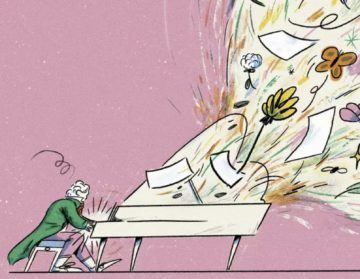 On Christmas Day 1989 after the fall of the Berlin Wall, Leonard Bernstein conducted Beethoven’s Ninth Symphony, with its setting of Friedrich Schiller’s Ode to Joy:
On Christmas Day 1989 after the fall of the Berlin Wall, Leonard Bernstein conducted Beethoven’s Ninth Symphony, with its setting of Friedrich Schiller’s Ode to Joy:
Joy, immortal incandescence!
Daughter of Elysium!
Drunk with fire from thy presence
To thy temple ground we come …
“Freude”—Joy—is the subject of Schiller’s ode, but Bernstein substituted the word “Freiheit”—Freedom—in his festive rendering of the work. That fit the occasion, but it also paid tribute to Beethoven himself, lauded as the composer of freedom by writers too numerous to mention.
There are rare moments when the triumph of the human spirit lifts us into a higher state of being. We look at perfect strangers and see the better angels of our nature, and shed the pettiness and petulance of daily life. We feel the touch of the infinite and feel the fullness of our freedom, because man is only free as a moral agent. And in such moments we hearken to the composer of freedom, whose 250th birthday falls this Dec. 16. People of good will everywhere will celebrate this anniversary with gratitude. I owe a personal debt to Beethoven, the guide and comfort of my youth, and in his honor I offer a thought about his music: It isn’t only that Beethoven was an apostle, or an exemplar of freedom, but that his music actually summons us to freedom.
More here.
Sean Carroll’s Holiday Message 2020: The Screwy Universe
Sean Carroll in Preposterous Universe:

Welcome to the third annual Mindscape Holiday Message! Just a chance for me to be a little more chatty and informal than usual, although as it turned out this isn’t all that different from a conventional solo episode. With the difference that what I’m talking about — a phenomenon called “cosmic birefringence” — has played a big part in my personal scientific career, so I get to be a bit autobiographical.
Every photon has a direction of polarization, which generally remains fixed as the photon travels through space. Birefringence is an effect by which the polarization rotates rather than staying fixed. It can happen in materials, but generally not in outer space. But there are exotic physics ideas that could cause such a rotation, including the dynamical dark energy candidate known as quintessence. People have put limits on such cosmic birefringence for a while now, but recently there was a claim that there might be a nonzero amount of birefringence visible in the polarization of the cosmic microwave background! Still very tentative, but if this hint turns into real evidence, it would big extremely big news for our understanding of physics and cosmology, possibly helping us pinpoint the nature of dark energy.
More here.
Sabine Hossenfelder: All you need to know to understand 5G
Mourning on a wintry day at the end of a year that has all been winter
Dur e Aziz Amna in the New York Times:
 For those, like me, living far from home, there is a worry so common it is banal: the Call. The call that comes when a loved one is hurt or dying. We brace ourselves against it, convinced that anticipation is inoculation against grief. To this day, I sleep with my phone on silent only when I am back in Pakistan; home is the place where late-night calls don’t seize the ground beneath you.
For those, like me, living far from home, there is a worry so common it is banal: the Call. The call that comes when a loved one is hurt or dying. We brace ourselves against it, convinced that anticipation is inoculation against grief. To this day, I sleep with my phone on silent only when I am back in Pakistan; home is the place where late-night calls don’t seize the ground beneath you.
In Michigan, when the phone rings in the middle of the night, it’s usually just a wrong number or a relative who thinks America is five hours behind and not 10. Sometimes though, it is a sunny morning, the house smells of coffee and the baby is playing with tiny toes when the phone rings, and something in you, that animal that senses danger before it manifests, tells you that it’s bad news.
More here.
Leonora Carrington – Britain’s Lost Surrealist
How Leonora Carrington Feminized Surrealism
Merve Emre at The New Yorker:
 When asked to describe the circumstances of her birth, the Surrealist painter and writer Leonora Carrington liked to tell people that she had not been born; she had been made. One melancholy day, her mother, bloated by chocolate truffles, oyster purée, and cold pheasant, feeling fat and listless and undesirable, had lain on top of a machine. The machine was a marvellous contraption, designed to extract hundreds of gallons of semen from animals—pigs, cockerels, stallions, urchins, bats, ducks—and, one can imagine, bring its user to the most spectacular orgasm, turning her whole sad, sick being inside out and upside down. From this communion of human, animal, and machine, Leonora was conceived. When she emerged, on April 6, 1917, England shook.
When asked to describe the circumstances of her birth, the Surrealist painter and writer Leonora Carrington liked to tell people that she had not been born; she had been made. One melancholy day, her mother, bloated by chocolate truffles, oyster purée, and cold pheasant, feeling fat and listless and undesirable, had lain on top of a machine. The machine was a marvellous contraption, designed to extract hundreds of gallons of semen from animals—pigs, cockerels, stallions, urchins, bats, ducks—and, one can imagine, bring its user to the most spectacular orgasm, turning her whole sad, sick being inside out and upside down. From this communion of human, animal, and machine, Leonora was conceived. When she emerged, on April 6, 1917, England shook.
more here.
The Winter Solstice
Nina MacLaughlin at The Paris Review:
 The summer solstice scene is loose and dewy, flower-crowned crowds in debauch around the bonfires. People leaped over flames and the tongues of flame licked up high into the night. In winter: private fires. Home hearths. These fires “have such power over our memory that the ancient lives slumbering beyond our oldest recollections awaken with us …revealing the deepest regions of our secret souls,” writes Henri Bosco in Malicroix. The Yule log didn’t start as a cocoa confection with meringue mushrooms on the top. It was oak burned on the night of the solstice. Depending where one lived, the ashes of the solstice fire were then spread on fields over the following days to up the yield of next season’s crop, or fed to cattle to up fatness and fertility of the herd, or placed under beds to protect against thunder, or sometimes worn in a vial around the neck. The ancient cults cast shadows in our minds, shift and flicker, their fears are still our fears, down in the darkest places of ourselves.
The summer solstice scene is loose and dewy, flower-crowned crowds in debauch around the bonfires. People leaped over flames and the tongues of flame licked up high into the night. In winter: private fires. Home hearths. These fires “have such power over our memory that the ancient lives slumbering beyond our oldest recollections awaken with us …revealing the deepest regions of our secret souls,” writes Henri Bosco in Malicroix. The Yule log didn’t start as a cocoa confection with meringue mushrooms on the top. It was oak burned on the night of the solstice. Depending where one lived, the ashes of the solstice fire were then spread on fields over the following days to up the yield of next season’s crop, or fed to cattle to up fatness and fertility of the herd, or placed under beds to protect against thunder, or sometimes worn in a vial around the neck. The ancient cults cast shadows in our minds, shift and flicker, their fears are still our fears, down in the darkest places of ourselves.
more here.
Tuesday Poem
Excerpts from “Cajas/Boxes with Zero Tolerance”
3.
In 1930, my tatarabuela still spoke Rarámuri.
Detribalized now as we’ve been from Turtle Island,
south and north of the río grande, west and east
it’s no surprise that we’re still writing about
our identities, brown women regarded
as brown women, they’d say equally as if
a consolation for any. What does it mean
to be Mexican living in Tejas,
singing in English? I blend in. U.S.
citizenship privilege—check. Education—check.
Job security, check. Chingona propensity, check.
Trauma half-lives (half-līves).
I thought music touches us first
and then the words.
If they built the wall near you,
you’d think music left for rhetoric too.
4.
If they built walls and migrant kennels near you,
you’d think music left for rhetoric too.
Jefferson Che Pop, six, stolen from his papá
Hermelindo, in El Paso, a day after crossing.
Weeks later, by phone, in Mayan Q’eqchi
Papá, I thought they killed you. You separated from me.
Where are you? You don’t love me anymore?
How can I sing a song in this English
when this country urges many to sign
this and that form in this English?
Have it all end with a form in English?
Why would any parent crossing countries
seeking asylum agree, deport me, childless?
from Split This Rock
